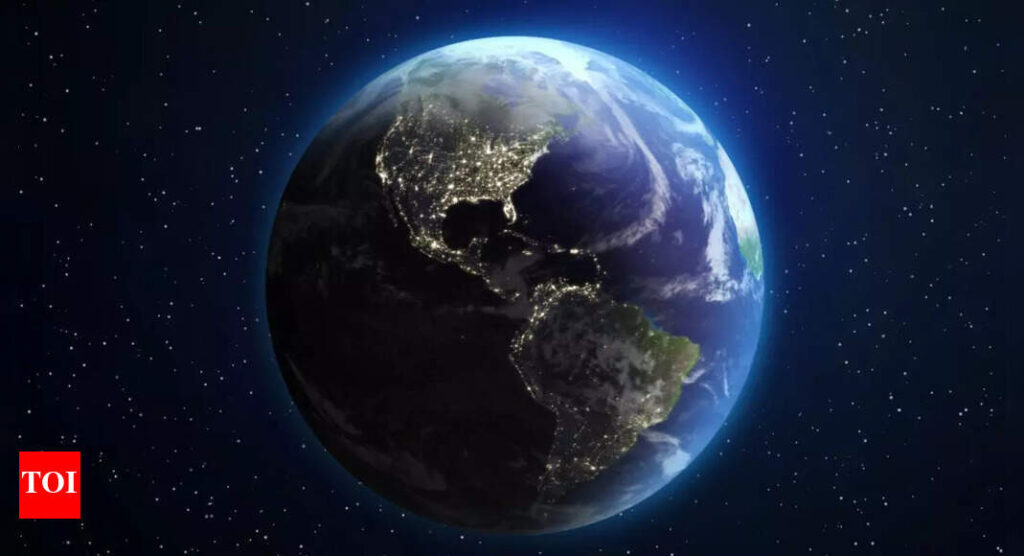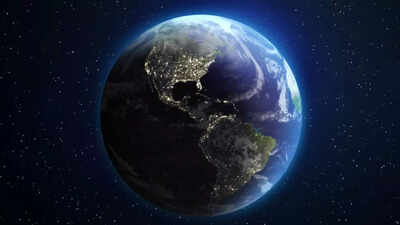In September 2023, seismic monitoring stations around the world began to register an eerie, rhythmic signal. Every 90 seconds, the Earth appeared to pulse—faintly but persistently. The phenomenon lasted for nine days and returned a month later, leaving scientists puzzled. There was no accompanying earthquake, volcanic eruption, or explosion to explain the tremors. The source of the mystery was traced to the remote Dickson Fjord in East Greenland. At the time, theories ranged from submarine volcanic activity to secret military tests.Now, almost two years later, researchers from the University of Oxford have offered the first concrete explanation using next-generation satellite and machine learning technologies. What they uncovered reveals not only the cause of the pulses but also a broader warning about the climate crisis unfolding silently in the world’s most remote corners.
The Earth shook without warning: 2023’s 90-second Arctic pulse
For nine consecutive days in September 2023, and again in October, seismic stations recorded signals repeating every 90 seconds. These pulses were subtle—far weaker than earthquakes—but unusual because of their precise regularity and global reach. The signals came from the Arctic, specifically from the Dickson Fjord in East Greenland.The incident baffled geophysicists and prompted international investigations. With no explosion, tectonic activity, or obvious surface disturbance detected, the mystery deepened.
Seiches vs. Tsunamis: Understanding the difference
Initially, some suspected a tsunami might be responsible. But experts soon distinguished the phenomenon as a seiche—a lesser-known but powerful water oscillation.
- Tsunami: Caused by abrupt displacement of water due to earthquakes, volcanic activity, or landslides. It travels as a single massive wave.
- Seiche: Occurs when water in an enclosed space like a lake or fjord repeatedly sloshes back and forth, creating standing waves. These are often triggered by landslides, strong winds, or seismic activity.
In this case, scientists confirmed the Dickson Fjord had experienced seiches—giant oscillating waves that created rhythmic seismic pulses without causing surface devastation.
What caused the Greenland Seiches
Researchers now confirm that the seismic pulses were the result of two massive glacier-induced rock and ice avalanches. These avalanches thundered into Dickson Fjord, displacing enormous volumes of water and generating tsunami-like waves with an initial height of up to 7.9 meters.Due to the fjord’s narrow and enclosed topography, the waves couldn’t escape and instead bounced back and forth like water in a bathtub. These oscillations—seiches—persisted for days, producing low-frequency seismic energy detectable across continents.
How NASA’s SWOT satellite uncovered Greenland’s hidden waves
The game-changer was data from NASA and the French space agency CNES’s Surface Water and Ocean Topography (SWOT) satellite, launched in December 2022. The satellite’s Ka-band Radar Interferometer (KaRIn) allowed researchers to scan a 30-mile-wide swath of the ocean surface in high resolution—something no previous satellite system could do.Oxford scientists used SWOT to map subtle elevation shifts in the fjord’s surface after the event. They observed slopes of up to two meters across the channel that reversed direction over time—clear signatures of standing wave motion.
Supporting evidence: Machine learning and seismic models
To fill in gaps in satellite data, scientists employed:
- Machine learning to reconstruct wave behavior over time.
- Crustal deformation data from sensors thousands of kilometers away.
- Weather pattern analysis, ruling out wind and tides as causes.
This multidisciplinary approach confirmed that the rhythmic seismic pulses came from seiche-driven energy trapped in the fjord.
Climate change’s fingerprints are all over the event
The most alarming takeaway from the study is the role of climate change. Warming Arctic temperatures are rapidly melting Greenland’s glaciers, weakening adjacent slopes and increasing the frequency of catastrophic landslides.As lead researcher Thomas Monahan stated:“Climate change is giving rise to new, unseen extremes. These changes are happening fastest in remote areas like the Arctic, where our ability to monitor them has historically been limited.”The study highlights how climate-driven geological events can have global seismic effects—often silently and without warning.
Why it matters: A new era of Earth monitoring
The incident and its resolution mark a turning point in Earth observation. Co-author Professor Thomas Adcock emphasized:“This is a perfect example of how next-generation satellite data and advanced modeling can resolve phenomena that have long been mysteries. We’re entering an era where we can better track tsunamis, storm surges, and even rogue waves.”Moreover, a Danish military vessel patrolling the fjord three days after the first pulse observed nothing out of the ordinary—underscoring how even massive events can leave little trace without advanced monitoring systems.


